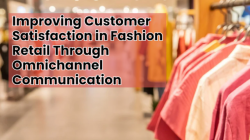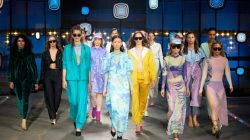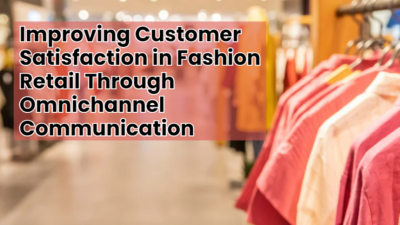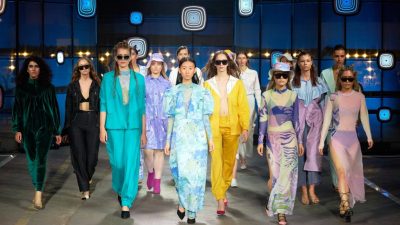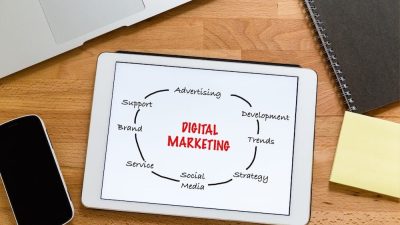How Influencer Marketing Drives Sales in Fashion and Accessories showcases the transformative power of influencers in shaping trends and boosting brand visibility. In today’s digital landscape, influencers are not just trendsetters; they are vital players in the fashion industry, capable of reaching diverse demographics and impacting consumer purchasing decisions. This synergy between brands and influencers creates a dynamic environment where style meets strategy, ultimately driving sales and fostering brand loyalty.
As brands navigate the ever-evolving world of fashion, understanding the nuances of influencer marketing becomes crucial. The collaboration with the right influencers not only amplifies brand awareness but also cultivates authentic connections with target audiences, paving the way for successful marketing campaigns that resonate.
The Importance of Influencer Marketing in Fashion

In the fast-paced world of fashion, influencer marketing has emerged as a critical component in driving brand visibility and shaping consumer behavior. Influencers, with their ability to connect authentically with their followers, play a pivotal role in defining trends and dictating the styles that define the industry. Their unique position allows them to introduce new concepts and products to vast audiences, making their impact on fashion undeniable.The influence of fashion influencers extends beyond mere trendsetting; it creates a significant ripple effect in brand awareness and visibility.
When influencers share their personal experiences with a brand or product, it resonates with their audience, fostering trust and driving engagement. This connection enhances the likelihood of purchases, as followers are more inclined to try products endorsed by someone they admire. Additionally, influencer marketing often leads to increased visibility across various social media platforms, allowing brands to reach demographics that traditional advertising methods may not effectively engage.
Influencers as Trendsetters
Fashion influencers possess a unique ability to shape consumer preferences and dictate what is considered stylish at any given moment. Their recommendations often lead to:
- Rapid Trend Adoption: Influencers can quickly popularize styles, as their followers are eager to replicate looks seen on their feeds.
- Authentic Engagement: Followers connect with influencers on a personal level, making them more likely to trust their fashion advice.
- Increased Brand Loyalty: When influencers endorse a brand, it helps in building a loyal customer base that aligns with their fashion choices.
The demographic reach of fashion influencers is extensive and varied, impacting sales in numerous ways. Influencers cater to different segments, from high-fashion enthusiasts to budget-conscious shoppers. This wide-ranging appeal allows brands to target specific markets effectively. For instance, micro-influencers, who typically have smaller but highly engaged followings, often yield higher engagement rates, resulting in significant returns on investment.
“The right influencer can amplify your brand message tenfold, tapping into audiences you never thought possible.”
As a result, brands collaborating with influencers can tap into new customer bases that enhance their market presence. With the rise of platforms like Instagram and TikTok, fashion influencers have become essential partners in brands’ marketing strategies, paving the way for innovative and dynamic approaches to consumer outreach. The strategic use of influencer marketing not only elevates brand visibility but also drives sales through authentic connections and relevant content.
Strategies for Successful Influencer Collaboration
In the ever-evolving landscape of fashion marketing, influencer collaborations have emerged as a powerful tool to boost brand visibility and drive sales. Identifying the right influencers and crafting campaigns that truly resonate with target audiences is crucial for achieving desired results. This section explores effective methods for selecting influencers and illustrates successful collaborations in the fashion industry.
Effective Methods for Selecting the Right Influencers
Choosing the right influencer can significantly impact the effectiveness of a marketing campaign. Brands should prioritize finding influencers whose values align with their own and who genuinely connect with their target audience.
- Audience Demographics: Assess the influencer’s audience to ensure they align with your target market in terms of age, gender, and interests.
- Engagement Rate: Look beyond follower counts; prioritize influencers with high engagement rates to ensure your message reaches an actively involved audience.
- Content Quality: Evaluate the influencer’s previous work for quality and consistency, ensuring their aesthetic matches your brand image.
- Brand Affinity: Select influencers who have previously collaborated with similar brands, indicating their understanding of the fashion landscape.
Designing Influencer Campaigns that Resonate with Target Audiences
Crafting impactful influencer campaigns starts with a clear understanding of the audience’s preferences and behaviors. Tailoring your message can enhance authenticity and engagement levels.
- Collaborative Content Creation: Engage influencers in the creative process to ensure their unique voice is reflected in the campaign, fostering authenticity.
- Storytelling Approach: Utilize storytelling to create emotional connections, allowing influencers to share personal experiences with your products.
- Incorporate User-Generated Content: Encourage audiences to share their experiences and use campaign-specific hashtags, amplifying reach and creating a community vibe.
- Strategic Timing: Launch campaigns during peak shopping seasons or events relevant to the influencer’s audience to maximize impact.
Examples of Successful Influencer Partnerships in the Fashion Industry
Numerous fashion brands have harnessed the power of influencer collaborations to achieve remarkable results. These case studies highlight the effectiveness of strategic partnerships.
- Fashion Nova and Cardi B: The partnership with the rapper resulted in viral collections, significantly boosting sales and brand awareness, emphasizing the importance of aligning with high-profile influencers.
- Adidas and Beyonce’s Ivy Park: By leveraging Beyonce’s influence, Adidas successfully launched Ivy Park, creating immense buzz and driving sales through limited-edition releases.
- Dior and Bella Hadid: Dior’s collaboration with Bella Hadid for their fashion shows showcased the power of using influential figures to elevate brand prestige and engagement.
Measuring the Impact of Influencer Marketing on Sales
In the rapidly evolving landscape of fashion and accessories, measuring the success of influencer marketing campaigns is crucial for brands aiming to maximize their return on investment. By establishing key performance indicators (KPIs) and utilizing advanced tracking techniques, businesses can gain valuable insights into how influencer collaborations drive sales. This section delves into the important metrics and methodologies for assessing the impact of influencer marketing on sales performance.
Key Metrics for Evaluating Success
To effectively evaluate the impact of influencer marketing on sales, brands should focus on specific metrics that capture both engagement and conversion rates. Understanding these metrics can help in fine-tuning marketing strategies and enhancing future campaigns. Key metrics include:
- Reach: The total number of unique users who have seen the influencer’s content.
- Engagement Rate: The level of interaction (likes, comments, shares) a post receives, indicating audience interest.
- Conversion Rate: The percentage of viewers who take desired actions, such as making purchases, after engaging with influencer content.
- Return on Investment (ROI): A measure of the revenue generated from influencer campaigns relative to the cost of the collaborations.
- Cost Per Acquisition (CPA): The amount spent on influencer marketing divided by the number of conversions achieved.
Tracking Sales Conversions from Influencer Promotions
Tracking sales conversions attributed to influencer promotions is essential for understanding the effectiveness of campaigns. Here are several techniques brands can implement to monitor conversions accurately:
- Unique Discount Codes: Provide influencers with unique discount codes that their followers can use at checkout, making it easy to attribute sales directly to the influencer.
- Affiliate Links: Utilize affiliate marketing links that track purchases made through the influencer’s promotion, allowing for precise sales tracking.
- Landing Pages: Create dedicated landing pages for influencer campaigns, where traffic and resulting sales can be monitored effectively.
- Customer Surveys: Implement surveys at checkout to ask customers how they heard about the product, helping to identify influencer-driven sales.
Tools and Software for Analyzing Effectiveness
To streamline the analysis of influencer marketing effectiveness, numerous tools and software solutions are available. These platforms provide insights into campaign performance and help brands optimize their strategies:
- Google Analytics: A powerful tool for tracking website traffic, conversions, and user behavior, enabling brands to understand the impact of influencer referrals.
- Influencer Marketing Platforms: Solutions like AspireIQ and Traackr offer detailed analytics on influencer performance, audience demographics, and campaign engagement metrics.
- Social Media Analytics Tools: Platforms such as Hootsuite and Sprout Social provide valuable insights into social media performance and audience interaction with influencer content.
- CRM Systems: Customer relationship management software can help track customer interactions and sales data, linking them back to specific influencer campaigns.
“Effective measurement of influencer marketing is not just about tracking numbers; it’s about understanding the narrative behind those numbers to craft more impactful campaigns.”
Case Studies of Influencer Marketing in Fashion and Accessories
Influencer marketing has transformed the fashion and accessories industry, allowing brands to connect with audiences in innovative ways. This section delves into successful case studies that highlight the effectiveness of influencer collaborations and the diverse strategies employed by various brands to achieve remarkable results.
Successful Campaigns by Renowned Brands
Several fashion brands have executed notable influencer marketing campaigns that serve as benchmarks in the industry. These campaigns illustrate different approaches and strategies, leading to impressive sales and brand visibility.
1. Fashion Nova and Cardi B
Fashion Nova, a fast-fashion brand, formed a partnership with rapper Cardi B, leveraging her massive social media following. The collaboration involved Cardi showcasing her outfits on Instagram, resulting in a surge of traffic to Fashion Nova’s website. The brand reported record sales, particularly during major events like the release of Cardi’s new music.
2. Daniel Wellington’s UGC Strategy
Daniel Wellington, a watch brand, effectively used user-generated content (UGC) in their influencer marketing campaign. They partnered with micro-influencers who shared their personalized photos wearing the watches with a unique discount code. This approach not only engaged customers but also created a sense of community, leading to increased brand loyalty and sales.
3. Revolve and its Influencer Trip
Revolve, an online fashion retailer, organized lavish trips for top influencers to exotic locations, where they showcased Revolve’s products. This event garnered massive attention through social media posts, significantly boosting sales during and after the trip. The brand’s strategy focused on creating aspirational content, which resonated with their target audience and drove engagement.
4. ASOS and Inclusive Campaigns
ASOS launched an influencer campaign featuring a diverse group of influencers, highlighting inclusivity in fashion. By showcasing various body types, ethnicities, and styles, ASOS positioned itself as a brand that values representation. The campaign not only enhanced brand perception but also led to a considerable increase in sales as consumers felt more connected to the products.
Comparative Analysis of Different Approaches
Each brand’s approach to influencer marketing varies based on their target demographic, brand identity, and marketing goals. Below are key comparisons:
Celebrity vs. Micro-Influencers
Brands like Fashion Nova leverage celebrity influencers for immediate visibility and broader reach, while brands like Daniel Wellington focus on micro-influencers for authentic connections and niche targeting.
Content Style and Engagement
Revolve’s aspirational content contrasts with ASOS’s focus on inclusivity, showcasing how varying content styles can attract different audience segments effectively.
Campaign Longevity and Impact
Short-term campaigns with high-impact events, like Revolve’s influencer trips, generate quick sales spikes, while ongoing partnerships with micro-influencers, as seen with Daniel Wellington, build sustainable brand loyalty over time.
“The key to a successful influencer marketing campaign lies in understanding your audience and selecting the right type of influencer to represent your brand.”
Key Takeaways from Prominent Case Studies, How Influencer Marketing Drives Sales in Fashion and Accessories
The following insights can be derived from the successful influencer marketing campaigns in the fashion sector:
Authenticity Matters
Audiences are more likely to engage with brands that partner with influencers who resonate with their personal values and aesthetics. Authentic representation fosters trust and drives purchase decisions.
Engagement Over Reach
Campaigns focused on engaging smaller, loyal followings often yield better results than those solely chasing large numbers. Building a community around the brand enhances customer loyalty and repeat purchases.
Data-Driven Decisions
Utilizing analytics to track engagement and sales metrics is crucial. Brands that adapt their strategies based on data insights can optimize their campaigns for maximum impact and effectiveness.By examining these case studies and their diverse approaches, it becomes evident that influencer marketing is not a one-size-fits-all strategy, but a dynamic tool that can be tailored to meet specific brand goals and audience needs.
Challenges in Influencer Marketing for Fashion Brands
The landscape of influencer marketing presents both opportunities and hurdles for fashion brands seeking to establish a strong online presence. While influencer partnerships can enhance brand visibility and drive sales, challenges such as misalignment with brand values, influencer credibility, and audience engagement must be navigated carefully. Understanding these obstacles is essential for fashion brands aiming to leverage influencer marketing effectively.
One of the primary challenges fashion brands face in influencer marketing is identifying the right influencers who resonate with their target audience. The process requires thorough research to ensure that an influencer’s following aligns with the brand’s values and aesthetics. Misalignment can lead to ineffective campaigns that do not resonate with consumers, ultimately harming brand reputation.
Common Obstacles in Influencer Partnerships
Fashion brands often encounter various obstacles when collaborating with influencers. Here are some key issues that can arise during the partnership process:
- Finding the Right Fit: Brands may struggle to identify influencers who authentically represent their product. A mismatch can diminish the campaign’s impact.
- Influencer Authenticity: Consumers are increasingly skeptical of influencer endorsements. If an influencer appears inauthentic or overly promotional, it can backfire and alienate the audience.
- Measurement and ROI: Determining the success of influencer campaigns can be challenging. Brands need robust metrics to evaluate performance and calculate return on investment.
- Compliance and Regulations: Navigating legal requirements and ensuring transparency in sponsored content can be complex and may lead to potential backlash if mishandled.
One effective way to overcome the challenge of finding the right influencers is to employ data analytics tools that track audience demographics and engagement rates. This ensures a more informed selection process, aligning brand values with the right influencer profiles. Additionally, fostering open communication and collaboration with influencers can help establish authentic connections and resonate more deeply with audiences.
Potential Risks of Influencer Partnerships
While influencer marketing can be advantageous, it carries potential risks that brands must be aware of before embarking on collaborations. Some of these risks include:
- Negative Publicity: If an influencer becomes embroiled in controversy, the associated brand may suffer reputational damage.
- Brand Misrepresentation: An influencer’s actions or statements may inadvertently misrepresent a brand’s ethos, leading to consumer confusion.
- Over-Saturation: Brands may face challenges when audiences perceive influencer content as repetitive or insincere due to oversaturation in the market.
To mitigate these risks, brands should conduct in-depth research and background checks on potential influencers. Establishing clear guidelines and expectations upfront can also prevent potential misrepresentation and ensure that the brand’s message is accurately communicated. Additionally, diversifying influencer partnerships can help combat over-saturation, keeping content fresh and engaging.
Solutions for Overcoming Influencer Marketing Challenges
Addressing the challenges in influencer marketing requires strategic planning and adaptability. Below are effective solutions to navigate these obstacles successfully:
- Comprehensive Research: Invest time in understanding influencer audiences, engagement levels, and past campaign performances to ensure a good fit.
- Building Long-Term Relationships: Establishing ongoing partnerships with influencers can foster authenticity and reliability, benefiting both parties.
- Utilizing Performance Metrics: Implementing clear KPIs allows brands to track campaign success and adjust strategies based on data-driven insights.
- Continuous Engagement: Maintaining a dialogue with influencers can help brands stay aligned with audience interests and adapt to changing trends.
By understanding the challenges and employing effective strategies, fashion brands can successfully navigate the influencer marketing landscape, driving sales and enhancing brand loyalty.
Future Trends in Influencer Marketing for Fashion: How Influencer Marketing Drives Sales In Fashion And Accessories
The landscape of influencer marketing in the fashion industry is evolving at an unprecedented pace. As brands and consumers alike adapt to changing digital environments, the role of influencers is set to transform significantly. This section delves into the emerging trends that will shape the future of influencer marketing, highlighting technological advancements and shifting consumer behaviors that will drive sales in the fashion sector.
Emerging Trends Shaping Influencer Marketing
Several key trends are emerging that will redefine how fashion brands leverage influencer marketing. These trends include the rise of micro and nano influencers, the integration of shoppable content, and the growing emphasis on authenticity and transparency. Understanding these trends is crucial for brands aiming to capture the attention of their target audience.
- Micro and Nano Influencers: These influencers, often with followings between 1,000 and 100,000, deliver higher engagement rates and foster closer connections with their audiences. Brands are increasingly prioritizing these influencers due to their perceived authenticity and relatability.
- Shoppable Content: The integration of e-commerce features directly into social media platforms allows users to shop seamlessly from influencer posts. This trend simplifies the purchasing process and increases conversion rates.
- Authenticity and Transparency: Consumers are becoming more discerning, favoring brands that promote genuine partnerships with influencers. Brands must ensure that influencer collaborations reflect true alignment with their values and aesthetics.
The Role of Technology in Influencer Marketing
Technology plays a pivotal role in shaping influencer marketing strategies within the fashion industry. The integration of advanced analytics, augmented reality (AR), and artificial intelligence (AI) are driving changes in how brands identify and collaborate with influencers.
- Advanced Analytics: Data-driven insights help brands evaluate the effectiveness of influencer campaigns, allowing for optimized targeting and strategy adjustments based on performance metrics.
- Augmented Reality: Fashion brands are leveraging AR technology to enhance customer experiences through virtual try-ons, enabling consumers to visualize how products would look before purchase.
- Artificial Intelligence: AI tools assist in identifying the right influencers by analyzing audience demographics, engagement levels, and content relevance, ensuring more effective partnerships.
Predictions for the Evolving Role of Influencers
Looking ahead, the role of influencers in driving sales within the fashion industry is expected to evolve significantly. Influencers will transition from simply promoting products to becoming integral parts of brand storytelling and community engagement.
- Brand Ambassadors: Influencers will increasingly act as brand ambassadors, working closely with companies to co-create products and campaigns that resonate with their audiences.
- Community Building: Influencers will focus on building communities around shared interests in fashion, fostering deeper connections with consumers and enhancing brand loyalty.
- Content Creators: As content consumption continues to shift towards video, influencers will become essential content creators, producing visually appealing and engaging media that drives sales.
As technology and consumer dynamics evolve, the future of influencer marketing in fashion will hinge on authenticity, smart technology integration, and a focus on community engagement.






